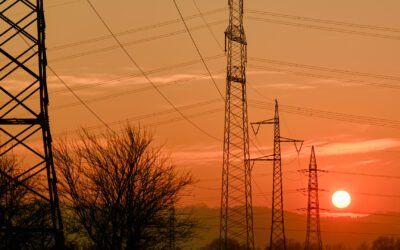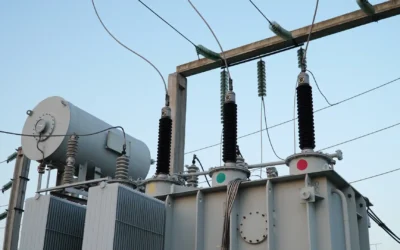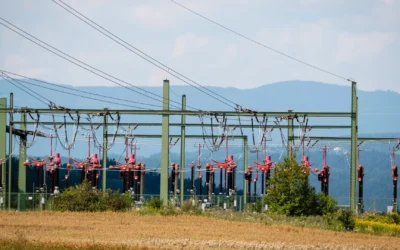• One aspect of the DOE 2027-2056 proposed law advocates for amorphous steel in the manufacturing of distribution transformers.
• Deployment of the DOE 2027-2056 proposed efficiency standards will affect domestic and foreign manufacturers, as well as those importing foreign equipment.
• Members of Congress expressed their opposition to the DOE 2027-2056 proposed efficiency standard to Secretary Granholm, mentioning challenges such as long lead times for distribution transformers and impacts on transformer manufacturers.
The demand for distribution transformers is expected to rise in the North American region in the coming years due to factors like installation of renewable energy generation plants, replacement of aging electrical infrastructure, adoption of EVs, and development of new electrical infrastructure. Various OEMs are expanding their production facilities in the face of growing demand to reduce lead times and reliance on imported transformers. However, these OEMs must adhere to set transformer standards to ensure reliability and optimal performance. The Department of Energy (DOE) has proposed a law, the DOE 2027-2056 efficiency standard for transformers, as it is beneficial for the end-users and the environment.
DOE 2027-2056 Efficiency Standard and its Benefits
The DOE plays a crucial role in establishing efficiency standards for transformers, mandating levels that manufacturers must meet to sell their products. In 2010, the DOE began regulating the efficiency of both dry-type and liquid-filled distribution transformers. These regulations were updated in 2016 as part of newly amended efficiency standards. Presently, the DOE is proposing further enhancements to efficiency standards for distribution transformers, which are expected to take effect in 2027. These proposed standards aim to increase transformer efficiency, leading to additional energy savings and reductions in emissions.
One aspect of the DOE 2027-2056 proposed law advocates for the use of amorphous steel, an electrical steel type produced through rapid cooling of molten alloy to prevent crystal formation. Compared to grain-oriented electrical steel (GOES), amorphous steel is thinner and has lower core losses but reaches magnetic saturation at a lower flux density. The anticipated benefits associated with these standards are substantial, with an estimated annual reduction in distribution transformer operating costs amounting to USD 961.8 million. Moreover, the projected climate benefits stand at USD 664.2 million annually, indicating a significant reduction in greenhouse gas emissions. In addition to environmental advantages, health benefits are expected to reach an estimated USD 665.2 million per year. With these combined benefits, the DOE forecasts a net annual benefit exceeding USD 1.6 billion.
Impact of DOE 2027-2056 Efficiency Standard on Distribution Transformer Manufacturers
There are multiple benefits to passing the DOE 2027-2056 efficiency standard legislation; however, the implementation of the law will have a significant impact on the distribution transformer manufacturers. Primarily, it will require a huge amount of money to bring different transformers into compliance with the new standard. The total cost that the industries including liquid immersed, LV dry type, and MV dry type will bear is expected to be USD 270.6 million, USD 69.4 million, and USD 3.1 million, respectively. The industry has to undergo these high costs in order to make the equipment compatible with the new standard.

Figure 1: Estimated Conversion Cost for Different Distribution Transformers.
Source: DOE
Adding on, the deployment of the DOE 2027-2056 proposed efficiency standards will affect domestic and foreign transformer manufacturers, as well as those importing foreign equipment. Firstly, for domestic manufacturers engaged in both core and finished transformer production, it may be necessary to invest in new equipment and adjust processes to meet required core production standards. Consequently, this adjustment may lead to increased production costs.
Secondly, foreign manufacturers involved in both core and finished transformer production may grapple with managing electrical steel supply chains when exporting to the US market. This challenge could result in longer lead times for material sourcing. However, they might continue to capitalize on a global market of electrical steel types and prices that have no tariffs on imported transformers. Thirdly, manufacturers purchasing cores from abroad might transition towards higher-grade electrical steel cores to adhere to the proposed standards, which will increase material costs. These scenarios show that DOE efficiency standards will have a considerable impact on transformer manufacturers if the law is passed.
Challenges and Legislative Response to Proposed Efficiency Standards for Distribution Transformers
Historically, lead times for distribution transformers have been in the 6–12 week range. However, supply chain issues over the last several years, during and after the pandemic, have resulted in increasing lead times across the industry from one year to four years. Many manufacturers are not bidding on new businesses due to insufficient materials and labor issues. These reasons, complemented with implications for manufacturers, are prompting the government to review proposed efficiency standards.
Initially, members of Congress expressed their opposition to DOE 2027-2056 efficiency standard through letters to Secretary Granholm, mentioning challenges such as long lead times for distribution transformers and impacts on transformer manufacturers. Later, a similar concern was raised by a bipartisan coalition of senators who emphasized the impact of amorphous steel scarcity on the nation’s electrical supply and security. Moreover, the National Electrical Manufacturers Association (NEMA) further highlighted challenges in a letter to the DOE, pointing out the inability of domestic manufacturers to produce amorphous steel cores internally and the resultant reliance on third-party suppliers, leading to supply chain disruptions and increased costs. In response to this opposition, legislative measures were introduced in Congress. Bills like H.R. 4167, S.3627, and H.R. 7171 have been passed recently that aim to prohibit the DOE from revising energy conservation standards for distribution transformers for several years. These actions reflect the ongoing debate and pushback surrounding the proposed efficiency standards.

Figure 2: A Chronological Overview of Events Occurring over Distribution Transformer Efficiency Standards.
Source: PTR Inc.
Way Forward
These proposed efficiency standards for distribution transformers present opportunities for cost-cutting, energy saving, and emissions reduction. However, they also pose challenges for local and foreign manufacturers and supply chain issues. The law has been debated in government institutions, and several legislations have been passed to delay its implementation. The best way for the stakeholders is to work together to navigate these challenges effectively and ensure a sustainable and resilient energy infrastructure for the future.
Distribution Transformer Service Overview
The research presented in this article is from PTR's Distribution Transformer market research. For information about this service please submit a request shown below.
Europe: +49-89-12250950
Americas: +1 408-604-0522
Japan: +81-80-7808-1378
GCC/Rest of APAC: +971-58-1602441
More About our: Distribution Transformer Market Research
Recent Insights
US Elections: Consequences of a Second Trump Presidency for Energy Sector
The US is making strides to move away from fossil fuels and eventually decarbonize the energy sector. The White House aims to achieve 80% renewable energy generation by 2030 and 100% carbon-free electricity by 2035. On the other hand, for electric vehicles, it has set...
US Power Transformer Market Snapshot
US Power Transformer Market SnapshotMarket OverviewUSA to expand transmission systems by 60% by 2030 and may need to triple those systems by 2050.United States is replacement driven market. The expected growth in the Power Transformers market in the United States in...
Sustainability Across Sectors: Highlights from GreenTech Festival 2024
Recently, I had the privilege to attend and present at the Greentech Festival, an excellent event in the realm of sustainability. This influential gathering left a profound impact, and I am delighted to share a comprehensive analysis of my experiences. The Greentech...
US Elections: Consequences of a Second Trump Presidency for Energy Sector
The US is making strides to move away from fossil fuels and eventually decarbonize the energy sector. The White House aims to achieve 80% renewable energy generation by 2030 and 100% carbon-free electricity by 2035. On the other hand, for electric vehicles, it has set...
US Power Transformer Market Snapshot
US Power Transformer Market SnapshotMarket OverviewUSA to expand transmission systems by 60% by 2030 and may need to triple those systems by 2050.United States is replacement driven market. The expected growth in the Power Transformers market in the United States in...
Sustainability Across Sectors: Highlights from GreenTech Festival 2024
Recently, I had the privilege to attend and present at the Greentech Festival, an excellent event in the realm of sustainability. This influential gathering left a profound impact, and I am delighted to share a comprehensive analysis of my experiences. The Greentech...
Europe Distribution Transformer Market: Navigating Changing Energy Dynamics
Europe's transition to clean energy is driving growth in the distribution transformer market. The growth is fueled by integrating renewable energy sources like solar and wind and the expanding infrastructure for electric vehicle charging. Distribution transformers are...



